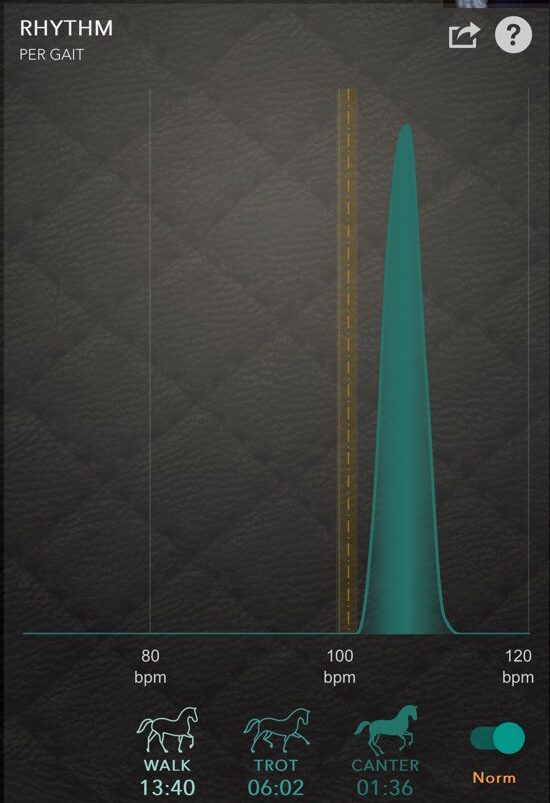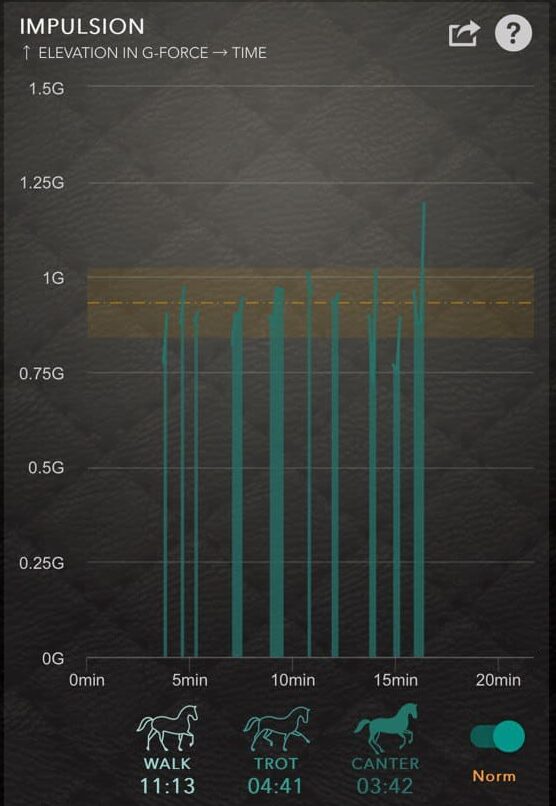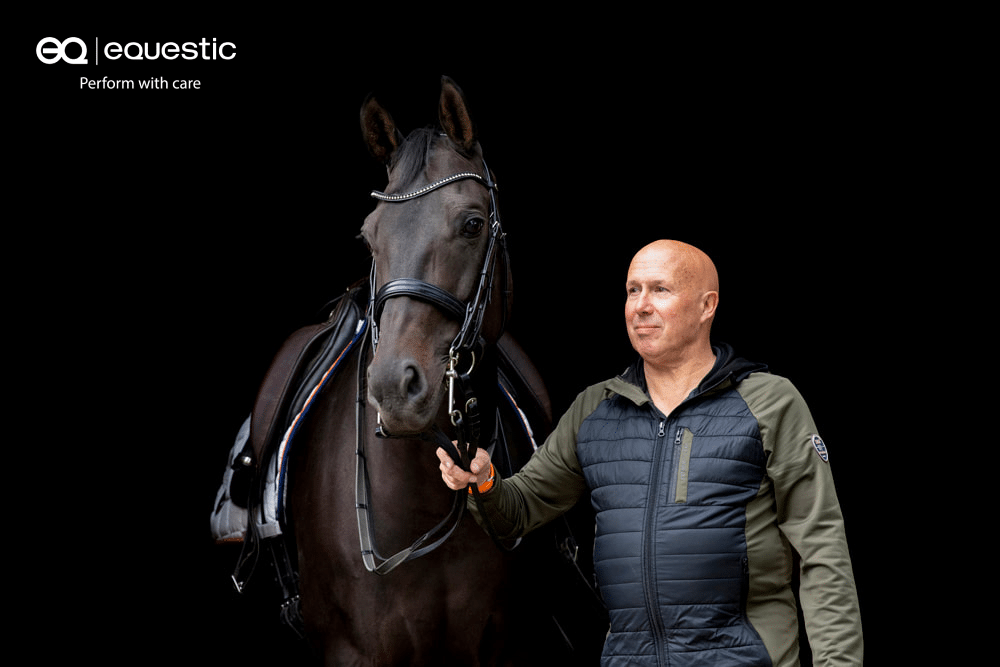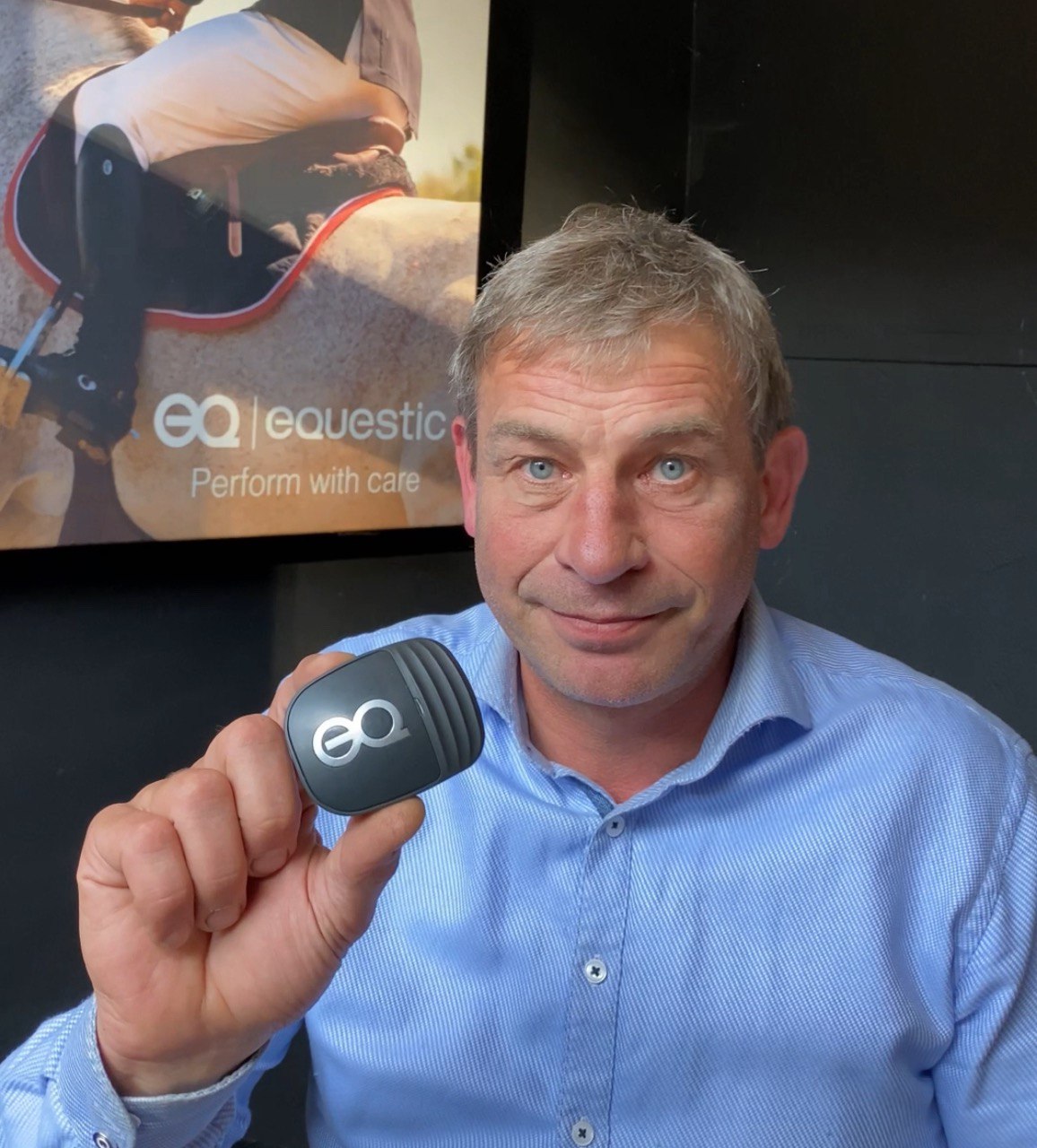"We were surprised by the wide range of functions of the saddle clip."
Jules Jansen has gained well-rounded experience from a diversity of trainers such as Fritz Tempelmann (Germany), George Theodorescu (Germany), and Jo Rutten, which was later refined by Jo Willems and Coby van Baalen. In recent years (since 2000), Jules has trained with Edward Gal and Nicole Werner.
EQ: Jules, you were among the very first users of the Equestic SaddleClip. Could you tell us about your experience with the Equestic SaddleClip?
Jules: I think it was about three or even four years ago. We were at an event that we organized with our “Technology in Equestrian Training”. Then we met Leon Rutten. He showed us the saddle clip and give one to us for testing.
We started riding with the saddle clip and immediately it showed some results, for example the symmetry of the movements. I did feel a slight difference by the trotting, but it wasn’t enough to be noticed just by looking alone.
So the saddle clip had recognized a difference between left and right in trotting, to small to be seen by the eyes.
We found a great tool in the SaddleClip to refine and control the training.
EQ: You have such diverse experience across all three domains: being a rider, a coach, and a judge in dressage. How have you been using the SaddleClip?
Jules: As a trainer, most of the time we can see what’s happening with a horse. But sometimes it’s nice, after two or three weeks, to put the Saddle Clip on and look, okay, how are we? What have we improved?
And especially, I think, the rhythm regularity and the power. That’s the most important and the clip gives more detailed graphics! And of course we use it for our pupils, to control the time and amount of rounds ridden on both hands. Times spent in different gates.
Especially if you are in the canter, it is what we do. For example, if somebody must do a collected and extended canter. You said, okay, try to build it up, try to dose it. The simplest thing to do as a rider is to count. Count your canter jumps in the normal canter.

Rhythm Consistency in collected Canter

Rhythm Consistency in extended Canter

Impulsion in collected and extended Canter
And now you’re going to do extended. Because at the end, you should have less jumps (you cover more ground in these jumps). So, if you start counting and you’re just improving your speed, you have about the same average jumps. In the same distance.
If you do a normal little 60 meters, (by example) about 15, 16, 17 jumps, in extending you should have – 11, 12. And then you have a real extending.
And that you can see in the rhythm and push-off. The rhythm should stay the same, even if you do extension. And that you can read back.
EQ: So, how do you utilize SaddleClip with your clients? How is it organized and how do they use it?
Jules: I did use it a few weeks ago for a pupil. I gave him the clip We used it for about 4 weeks and did look at the results every 2 weeks.
You should use the clip always on a longer time period, say once a week. So you are able to see clearly the difference between your exercises.
You have to realize that training isn’t about riding tricks but working a body like a top sporter. So it’s going to take time, for the body to develop and improve and for the horses mind to accept and learn.
And if I want to improve several things, half passes, travers, shoulder in or doesn’t matter. I have to improve the body.
If he isn’t supple on the left, but he’s supple on the right, he’s not going to be straight. I can keep him straight, but that isn’t straight. Straight is off my hands on his own legs moving forward to my hand.
The benefit is for us – easy to work with, easier to look up because now, after riding, you can look with the ride at the app and visualize all the movements.
And then you can say, okay, in big lines, in great lines, it is good. You’re just looks at the graphics.
It is so nice when you have the a really good or a really bad part, doesn’t matter what – you want to highlight that. And then you can use the graphics.
Yeah, this is great. So, it’s kind of helping you to emphasize the problem or enhance the improvements.
EQ: Do you have a scenario in which a customer, after training with you, leaves but continues to receive coaching remotely, using the clip as a means of maintaining the connection between you and the customer?
Jules: It is possible, but I recommended that the also make a video off the workout and if possible, let it be synchronized with the clip.
They have to be specific on the exercises what to record and do it every time in the same way. Then you’re able to compare.
EQ: I believe you’re aware of the changes in the FEI and USDF rules last year, especially concerning the use of sensors. They have now permitted the use of sensors in competitions for all FEI tests up to level 4, including all CDIs and FEI dressage tests below the CDI level. How do you think this will affect us?
Jules: I think that’s progress. Because a test is always different from your home training.
Yeah, of course, it is allowed. Why not? It isn’t providing any direct feedback to the rider.
EQ: Your insights from experience are incredibly helpful for us. Additionally, we’re trying to understand: what is the biggest issue associated with using the SaddleClip? Many trainers and riders express reluctance, saying, ‘I don’t like it.
Jules: Some trainers don’t like techniques. And it’s true to be said: the trainers eye comes always at the first place! But the technique can help us improving!
And for the use of clip you have to do a bit off study, to use it optimal! Because it isn’t that simple.
I would like a version of the clip that will be working with the video off your phone simultaneously. So, you just take up your phone and film it.
So, you need some explanation with examples. What a horse does and what the chart shows – to map them, to let people understand better how to get it right.
Especially with videos or live demonstrations, with examples and with Equestic charts.
Equestic team sincerely thanks Jules Jansen for his invaluable insights.
His expertise and enthusiasm for combining traditional equestrian knowledge with modern technology illuminate a path forward for the sport.
We look forward to fostering this blend of tradition and technology in our shared passion for equestrian excellence.
We invite you, our community of passionate riders and horse enthusiasts, to share your own experiences. Whether it’s a story of triumph, a tale of overcoming challenges, or a simple reflection on the everyday moments of joy and companionship with your horses, your stories are what make the equestic community vibrant and unique.










